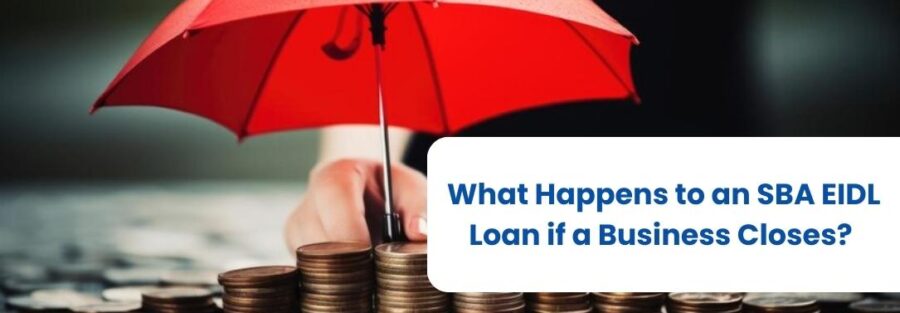In the wake of the COVID-19 pandemic, businesses across the United States sought financial relief through SBA Economic Injury Disaster Loans (EIDL), amounting to a staggering $630 billion. However, the unfortunate reality is that not all businesses can weather the storm. For those businesses that utilized an EIDL loan and are now facing closure, understanding the repercussions is crucial. Let’s delve into the intricacies of what happens to an SBA EIDL loan if a business closes.
Understanding the Purpose of EIDL
The Economic Injury Disaster Loan (EIDL) serves as a financial lifeline for businesses navigating the tumultuous waters of unforeseen disasters, such as the COVID-19 pandemic. Introduced by the Small Business Administration (SBA), the EIDL isn’t just another loan; it’s a strategic tool aimed at helping businesses meet their financial obligations and operational expenses during times of crisis.
In essence, the EIDL is a financial safety net designed to bridge the gap caused by the economic fallout of disasters like the global pandemic. Unlike conventional loans, EIDLs prioritize the preservation of business continuity. They are tailored to cover not only immediate financial needs but also sustain the business for an extended period. Originally crafted to provide up to six months of working capital, the program’s flexibility became evident as the SBA extended its support to cover a span of 24 months.
This means that businesses could access funds not just for short-term survival but for navigating the long-term economic challenges posed by the disaster. Whether it’s paying employees, covering rent, or managing other crucial operational expenses, the EIDL stands as a versatile financial instrument crafted to keep the wheels of businesses turning during adversity.
However, it’s crucial to note that the nature of the EIDL also implies a long-term commitment from the business. The 30-year term underscores the expectation that the business will recover and eventually repay the loan, creating challenges when a business contemplates closure.
Identifying the Loan Size and Its Consequences
The magnitude of the EIDL loan, ranging from less than $25,000 to over $200,000, plays a pivotal role in determining the consequences for a business, especially when facing closure.
For businesses securing an EIDL of less than $25,000, there’s a reassuring aspect – negligible risk. These smaller loans don’t require collateral or a personal guarantee. Consequently, if the business closes, there’s minimal exposure to the government seizing personal assets.
Moving into the $25,000 to $200,000 bracket, the dynamics shift. Collateral becomes a requirement, and a “blanket lien” is imposed on all company assets. In the unfortunate event of business closure and default on the loan, the government has the authority to seize business assets like buildings, machinery, or vehicles to settle outstanding debt.
The stakes escalate for businesses that have taken an EIDL exceeding $200,000. A personal guarantee, indicating the business owner’s financial responsibility, comes into play. In addition to the blanket lien on business assets, the SBA can seize personal assets, putting the business owner’s finances at considerable risk.
In essence, the size of the EIDL loan not only determines the financial magnitude of the support received but also intricately influences the consequences a business may face in the event of closure. Smaller loans offer a level of insulation, while larger loans pose more significant risks and obligations. This understanding is paramount for businesses navigating the complexities of EIDL and contemplating their future amid challenging circumstances.

Best Approaches for Handling an SBA EIDL Loan When Closing
When a business faces closure, three primary options exist for managing an SBA EIDL debt: offer-in-compromise, adherence to SBA guidelines for business liquidation, or opting for bankruptcy.
Option 1: Offer-in-Compromise [NO LONGER AVAILABLE AS OF JUNE 2023]
In the realm of business closures and the financial aftermath of utilizing an SBA Economic Injury Disaster Loan (EIDL), the Offer-in-Compromise (OIC) was once considered a potential lifeline. However, as of June 2023, this avenue has been closed off, leaving businesses with the need to explore alternative solutions.
An EIDL offer-in-compromise was an agreement between the borrower (the business) and the lender (the SBA), allowing the business to settle its debt by paying a lump sum amount less than the total owed. This option typically became viable after the business officially closed, and all assets not encumbered by the SBA had been liquidated.
However, the OIC was far from a guaranteed solution. To be considered eligible, the business (and the individual, if personally guaranteed) had to meet a range of criteria. One particularly challenging criterion was that the offered amount had to be at least as much as the SBA could expect through enforced collection proceedings, such as liens on assets, wage garnishments, and obtaining a judgment. Moreover, an OIC usually required a lump sum payment within 60 days of approval.
Unfortunately, the SBA’s current stance is that it is no longer processing Offer-in-Compromises, explicitly stating that debt forgiveness is unavailable for COVID EIDLs of any loan amount. The reality is that businesses seeking expedited solutions are left in a challenging position, as the SBA’s reported 6 to 12 months timeframe for an offer-in-compromise decision renders it impractical for those in urgent need of resolution.
For businesses with a personal guarantee, the options are limited. Seeking hardship or reduced payments, making ongoing payments with the hope of a future settlement allowance, paying off the debt, or considering bankruptcy are now the pathways available in the absence of the once-viable Offer-in-Compromise.
Option 2: Bankruptcy
When a business is on the brink of closure and the financial strain from an SBA EIDL loan is too burdensome, bankruptcy becomes a strategic option. This second approach involves a legal process aimed at resolving outstanding debts, offering a structured and regulated framework for businesses to navigate financial distress.
Business Bankruptcy – Chapter 7:
For businesses with assets, equipment, inventory, or outstanding accounts receivables, Chapter 7 bankruptcy is a potential solution. It entails the liquidation of the business’s assets to satisfy creditors, including the SBA. This process provides a definitive resolution, signaling to all parties involved that the business genuinely cannot meet its outstanding debts.
However, businesses should be mindful of the potential risk to personal assets if the EIDL exceeds $200,000 or if other debts carry personal guarantees.
Individual Bankruptcy: Chapters 7, 11, or 13:
If the business owner signed a personal guarantee for the SBA EIDL or similar debts, personal bankruptcy may be necessary. Chapters 7, 11, or 13 can reduce or eliminate the debt tied to the business’s EIDL, offering a lifeline for individuals facing financial distress.
Navigating bankruptcy is a complex process that requires careful consideration and legal expertise. While it may not be an easy decision, it can provide a structured means of alleviating the financial burden associated with an SBA EIDL loan.
Frequently Asked Questions:
Q: What happens if my business closes and I have an EIDL loan?
A: The impact varies based on your loan size. Smaller loans under $25,000 pose minimal risk, but larger ones may lead to asset seizures if collateral is involved. Personal assets are at risk for loans exceeding $200,000 with a personal guarantee. Legal considerations like bankruptcy might be necessary.
Q: What happens to SBA loan if business fails?
A: The outcome depends on loan size. Smaller loans have limited impact, but larger ones may lead to asset seizures or personal liability. Seeking professional advice is crucial for post-business failure.
Q: What happens if you sell a business with an EIDL loan?
A: Selling introduces complexities. The new owner may assume the loan or negotiate terms with the SBA. Failure to address the EIDL loan during the sale can lead to legal and financial complications.
Q: What happens if my business cannot repay the EIDL loan?
A: Consequences depend on the loan amount. Smaller loans may have fewer repercussions, but larger ones may result in collection proceedings, including asset seizures. Exploring options like renegotiation, bankruptcy, or seeking professional advice is crucial in such situations.
Conclusion:
In the challenging landscape of business closure and the financial implications of an SBA EIDL loan, businesses need strategic guidance and support. At Enterprise America, we understand the intricacies of these financial challenges and offer tailored solutions for businesses facing closure. Whether exploring an offer-in-compromise or considering bankruptcy, our experienced team is here to provide the expertise and support needed to navigate these complex financial decisions. Contact us today for personalized assistance in managing your SBA EIDL loan and securing the best outcome for your business’s future.




